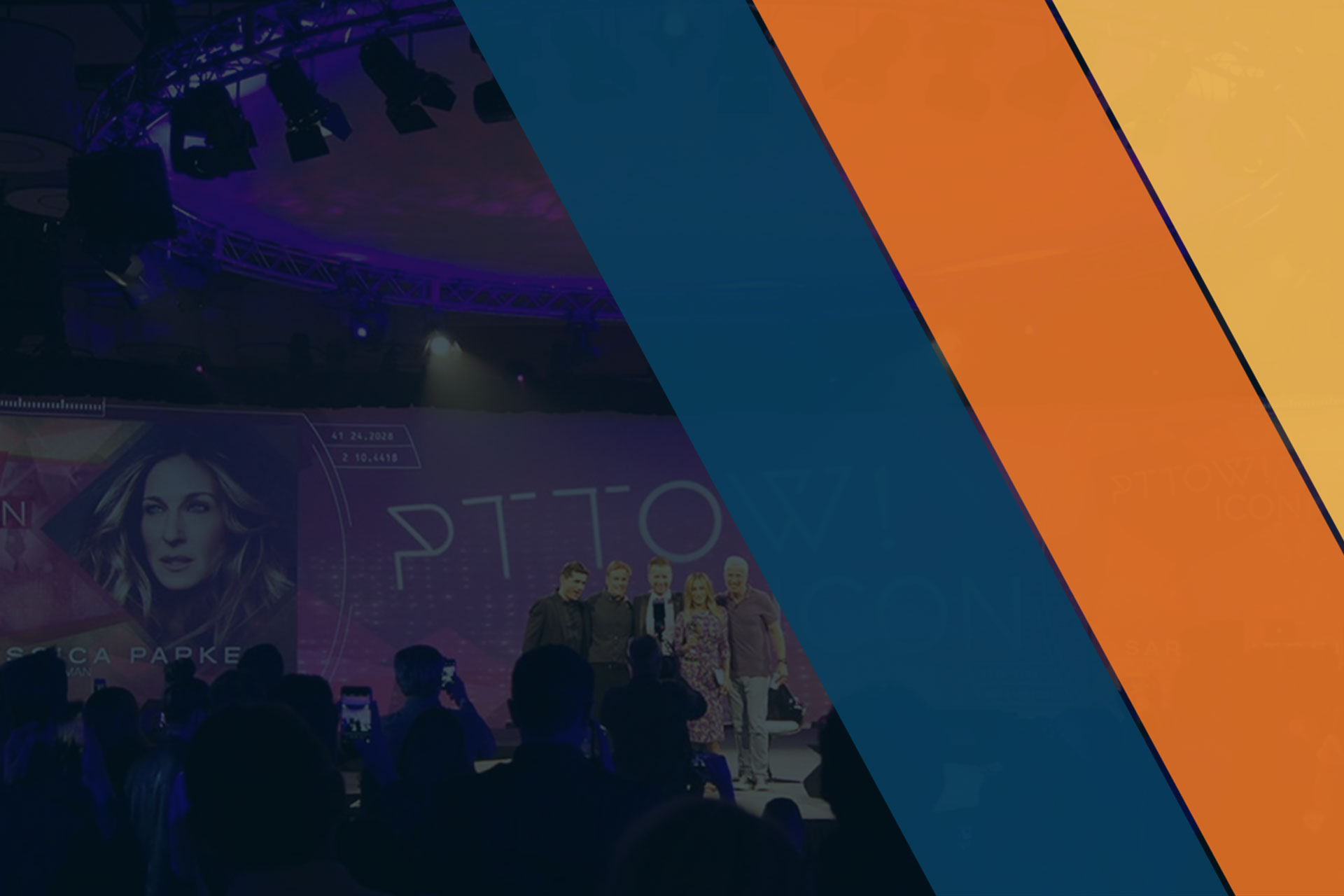

How to Use AV to Amp Up Your Event
There is no doubt that using audio visual technology at your event can help make a greater impression on your audience. But with so many options, what should you use? Here are some examples of audio visual technology you can use to keep your attendees talking:
Video Walls
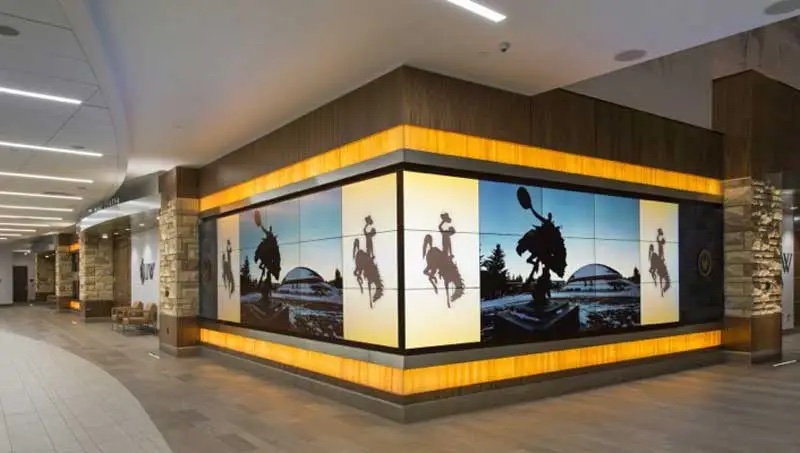
Example of video walls in action. Image source.
What are Video Walls?
A video wall is a set of led panels tiled together to create a single, large, custom-shaped display. Video walls are the perfect event content display solution, giving venue or event managers a way to enhance everything from corporate presentations to music acts to awards shows.
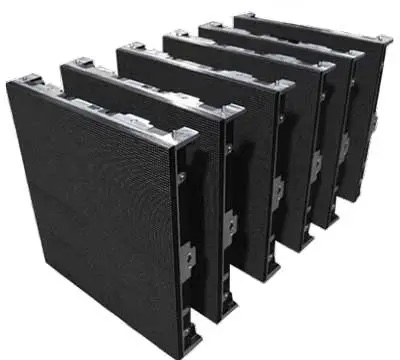
Video panels can be seamlessly linked to form unlimited sizes. They can also be built in flat, curved and three-dimensional shapes - making them ideal for a variety of indoor and outdoor applications that require large displays or customized aspect ratios.
In order to display content, the technician uses a video wall controller. This device connects to the source, such as a computer, and dictates the design of the content displayed. Video wall controllers can use either IP streaming or physical inputs to display content, allowing the technician to operate live video feeds, computer software and more from one interface.
Detached video wall panels, without power. Image source.
What are the Advantages of Video Walls?
Higher Resolutions
Because video walls are built by connecting individual panels, the total resolution of the display surface increases with each display added to the final system. They also offer an advantage in that they can be expanded without lowering resolution quality, unlike other technologies like a projector or single display.
More Control
Video walls are easier to control than individual displays, even if two units of the system are located on opposites sides of the venue. The video wall controller offers powerful processing that gives the user easy control over which content is displayed, where it’s displayed and when. Because of this, video walls provide an advantage in that they offer more control when managing event content.
More Engaging Content
Video walls are guaranteed to catch the attention of event goers. With real-time data tracking, live stream displays and unlimited size possibilities, you can create targeted, engaging messages.
Interactive Opportunities
Many video walls can easily be transformed into a multi-touch surface, allowing event-goers to interact with on-screen content. Additionally, displays can be integrated with social media and other smartphone apps to increase event engagement.
OLEDs
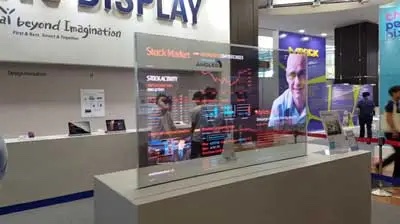
Event OLED in action. Image source.
What are OLEDs?
OLEDs, or organic light emitting diodes, are a thin and efficient form of display that provides the highest image quality available on the market. This type of display allows deep levels of black and glimmering whites to be obtained, along with vibrant color and pixel-perfect resolution. OLEDs are an emissive technology that does not require a backlight – because of this, they can be manufactured thinner and more efficient than LCD displays, which do require a white backlight.
What are the Advantages of OLEDs?
Higher Quality Imagery
OLED displays offer a higher-quality image and wider viewing angles than many other event technologies. In addition, they also use less power and have a smaller footprint than larger displays like video walls.
Makes a Great First Impression
Some OLED displays look like they are straight out of the future – they’re certainly more attractive than the everyday flat screen TV. When an event goer comes across a translucent display that they’re able to interact with, you’re guaranteed to make a great impression.
More Durable and Lightweight
Since OLED doesn’t need a backlight and other electrical/circuitry components, it offers a more durable and lighter weight solution compared to other types of event technology. Plus, OLED films are durable and can operate at a wider temperature range than regular LEDs without negative effects.
More Efficient Way of Communication
OLED provides a better way for event managers to communicate with attendees, employees and potential customers. Especially useful for smaller events, OLED displays provide minimal obstruction and maximize limited space.
Over the past decade, the use of OLEDs has expanded as the technology becomes more accessible and affordable. As more and more event managers embrace this exciting type of display, event experiences are becoming more immersive. These new display environments are keeping audiences engaged in events of all types.
The great thing about OLEDs is their versatility. In futuristic fashion, current interactive OLEDs give the event goer the ability to swipe and manipulate on-screen translucent images. Additionally, OLEDs can be used for general lighting or intricate light displays. In the coming years, OLED technology may expand to encompass foldable, rollable and wearable products, as well.
Projection Mapping
What Is Projection Mapping?
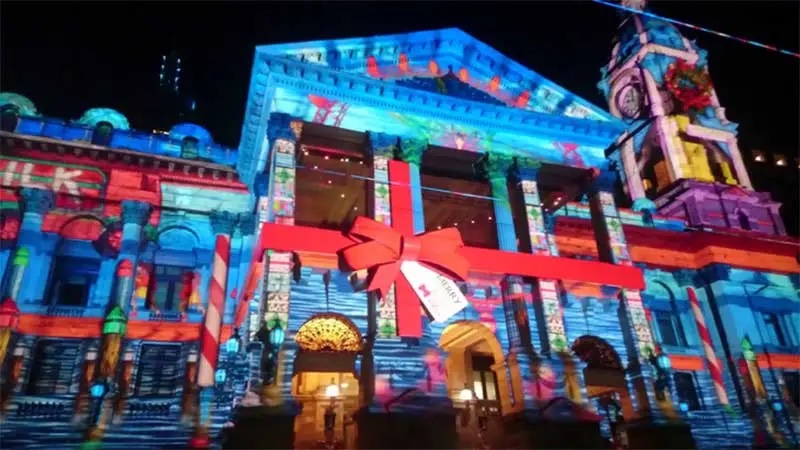
Projection mapping on the facade of a building. Image source.
Once reserved for big-budget event productions, recent advances in technology have made projection mapping more accessible to venues of all sizes. Projection mapping is the practice of projecting content onto three-dimensional surfaces, such as the facade of a building, an office entryway or a basketball court. Take a look at the image below, which depicts a traditional projector on the left, and a 3D projection on the right.

Comparison of traditional projection vs. projection mapping. Image source.
Projection mapping can be used in a variety of ways, from advertising to live concerts to product launches, stage performances, decoration and anything else you can dream up. Using specially developed software and a lot of creativity, you can line-up virtual content to make physical objects appear to come to life.
What are the Advantages of Projection Mapping?
Greater Emotional Engagement
Projection mapping can make an entire venue come to life in ways that normal displays, lasers, and other lights simply cannot. While more traditional event technologies still serve useful purposes, projection mapping can create truly immersive environments, creating more impact and higher engagement levels.
Portable Placement of Projectors
One big advantage of projection mapping is the ease of portability. Without physical displays, sets and props, fabrication, implementation and tear-down time is drastically reduced. All you need is the software and projector to create an unforgettable show.
Unlimited Opportunity
With the freedom to display what you want, wherever you want, it opens up the door to some exciting creative opportunities. Just look to Harrods for inspiration. Harrods developed a video projection campaign in which a giant Fabergé egg took over four of the windows in the department store. Visitors could choose their favorite pattern and have it projected onto the egg, creating a custom viewing experience. Whatever you want to achieve, projection mapping gives you the chance to flex your creative muscle.
Live Streaming
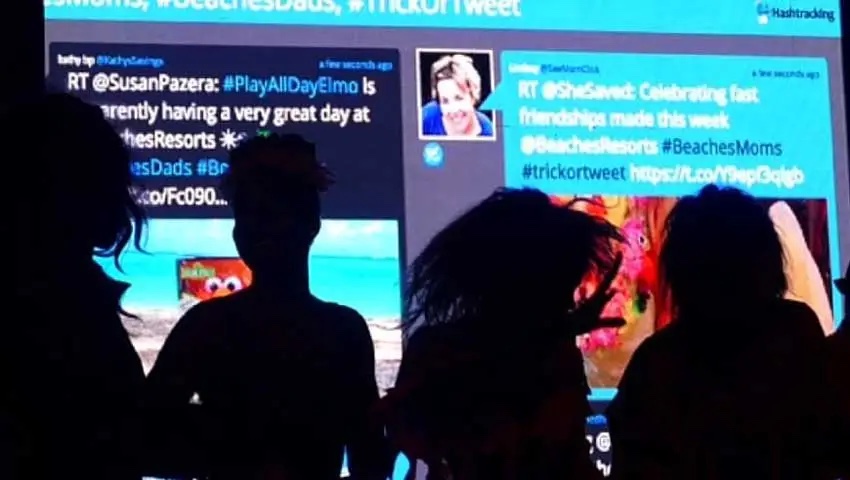
Live Twitter feed display at an event. Image source.
What is Live Streaming?
Live streaming during an event is a great way to increase audience engagement. In many cases, it’s an expected and cherished way to view event content at a venue. For example, when was the last time you went to a professional sports game or a large concert and been forced to squint at the court or stage to see the action? Plus – everyone loves the “kiss cam”!
Social media feeds are also another popular form of live streaming for events. After all, every event these days, from major award shows to your friend’s wedding, has its own hashtag – along with requests to call it out on social media.
Another way live streaming can increase your event reach is by way of live streaming online. Sometimes, prospective attendees simply cannot attend because of a prior engagement, tickets are sold out or costs are too high. With live streaming, you can cast your event content on the web for anyone to enjoy.
What are the Advantages of Live Streaming?
Expand Your Audience
Everyone enjoys seeing their name up on the big screen. There’s a huge incentive for social media users to promote your event online and then see their post go live to a real audience.
If you want to increase event engagement, live streaming is the way to do it. The more event-goers you can get to participate in your hashtag or other social media efforts, the more your audience grows – even beyond the venue walls.
Give Every Attendee a Front Row Seat
Whether you’re hosting a festival or corporate presentation, live streaming gives users the chance to view the action from anywhere in the room (or anywhere in the world – put your live stream on your website or social media page and let virtual users join in!).
Cut Down Your Budget
If your budget is a little low this year, you could consider running an entirely virtual event using live streaming technology. Instead of having a physical trade show, conference or corporate event, host an event online through your website or social media accounts. This will help you save big on your budget, while still delivering useful, targeted content to an audience.
In Conclusion
By implementing the above technologies, you can ensure the AV production of your upcoming event makes a great impression on your audience. Video walls, OLEDs, projection mapping and live streaming can help you increase event engagement and create an unforgettable experience.

